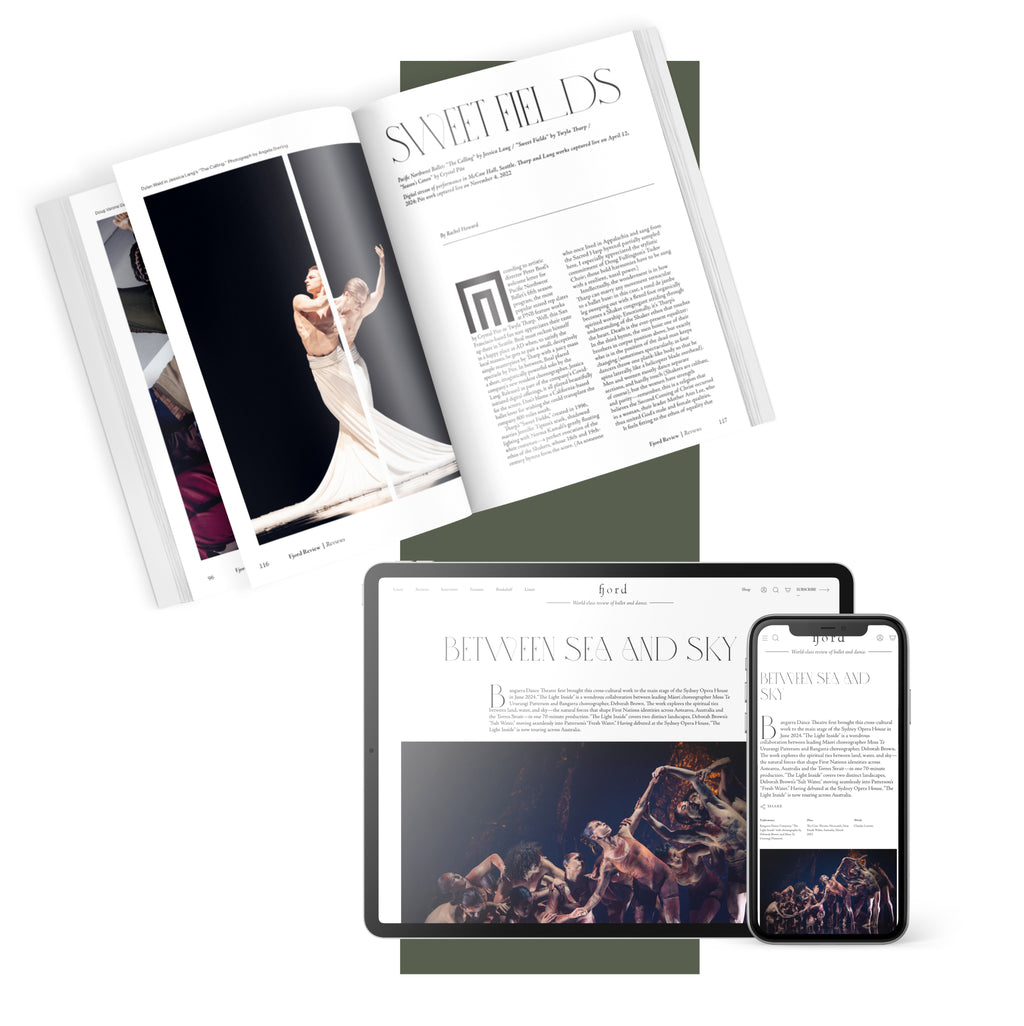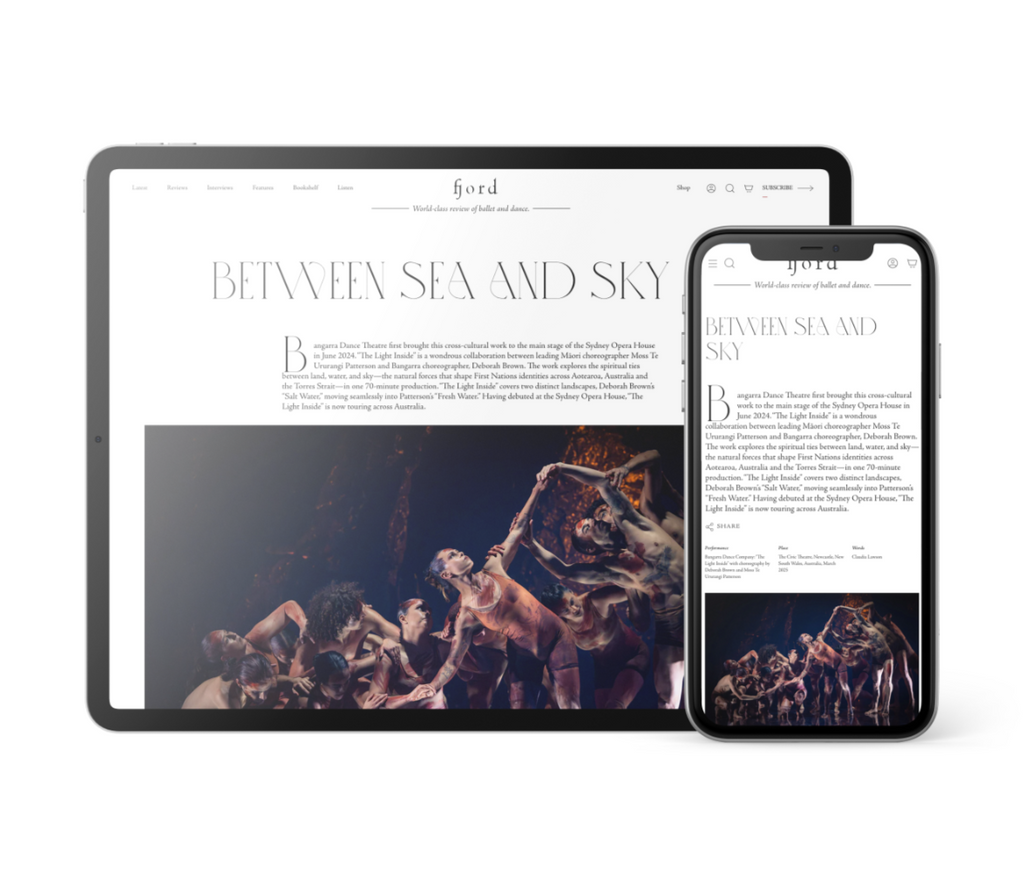Natural Histories
Miriam Miller steps into the center and raises her arm with deliberation, pressing her palm upward to the vaulted Gothic ceiling of the cathedral.
Plus
World-class review of ballet and dance.
The Tiffany Mills Company and Ensemble Ipse recently teamed up for a weekend of shows at the National Sawdust Theater. Theirs was a good, symmetrical pairing: Mills brought seven talented dancer-actors to the party opposite Ipse’s seven talented violists. Yet despite this balanced equation in personnel, their combined efforts leant more towards destabilization than tidy sums. Over the course of an hour, the musicians and dancers presented three different works. On their own, these pieces were slightly impenetrable, but, considered together, the artists wove a dreamlike tapestry based around the tentpole themes of sight and suffering.
Performance
Place
Words



“Uncommonly intelligent, substantial coverage.”
Your weekly source for world-class dance reviews, interviews, articles, and more.
Already a paid subscriber? Login

Miriam Miller steps into the center and raises her arm with deliberation, pressing her palm upward to the vaulted Gothic ceiling of the cathedral.
PlusIn a series called “Just Dance” on Nowness—a site I sometimes visit to see what’s up in the world of “genre busting” dance films that make it onto this stylized platform—I sometimes find little gems that quietly rock my world.
PlusBack in October, New York City Ballet got a new cowboy. His arrival occurred in the final section of George Balanchine’s “Western Symphony.”
PlusWhen Richard Move enters from stage left, his presence is already monumental. In a long-sleeved gown, a wig swept in a dramatic topknot, and his eyes lined in striking swoops, the artist presents himself in the likeness of Martha Graham—though standing at 6’4, he has more than a foot on the late modern dance pioneer.
Plus
comments